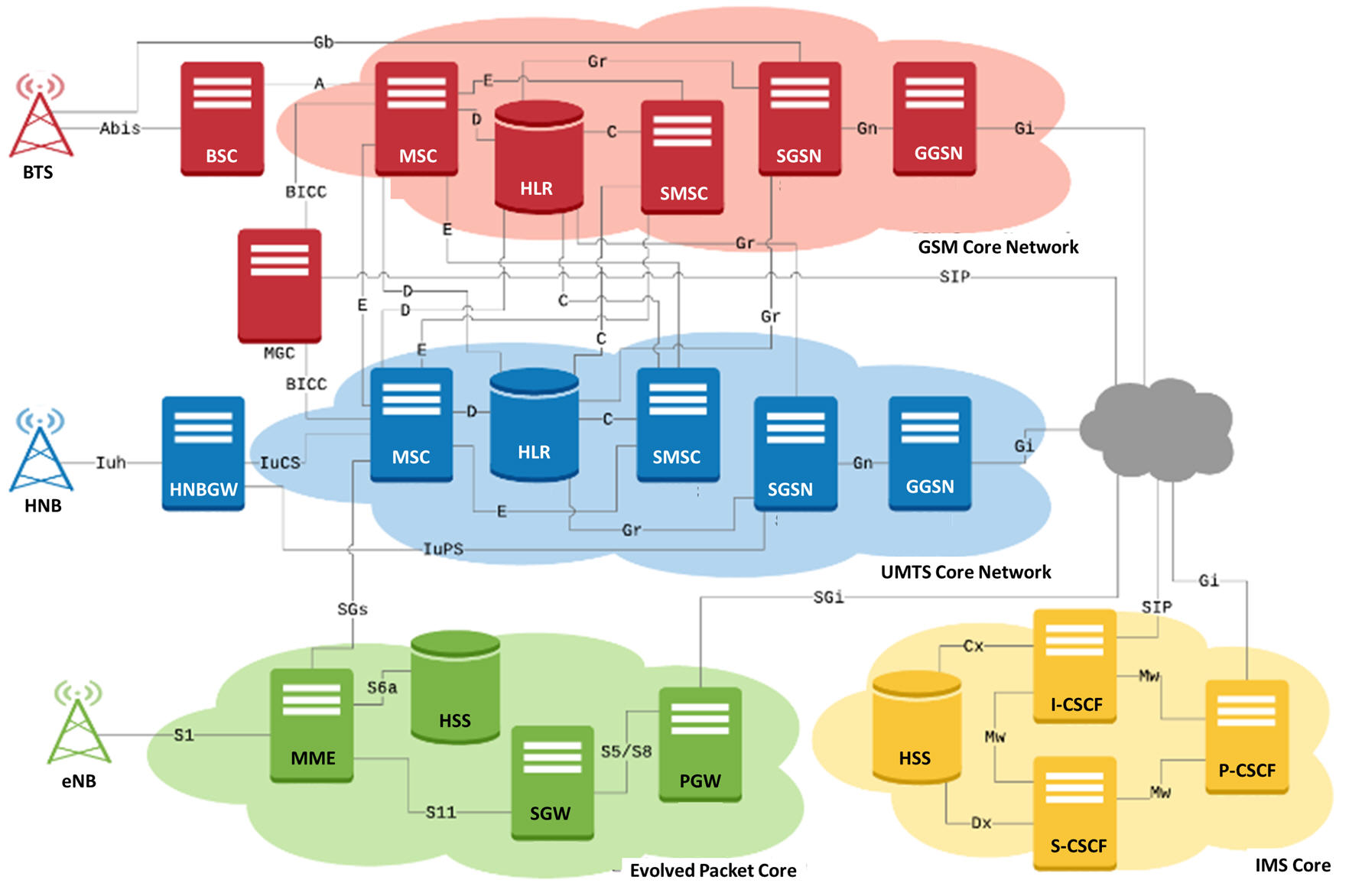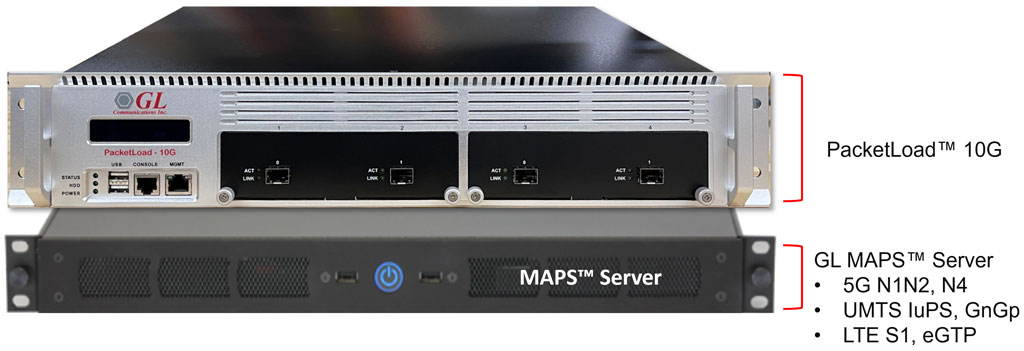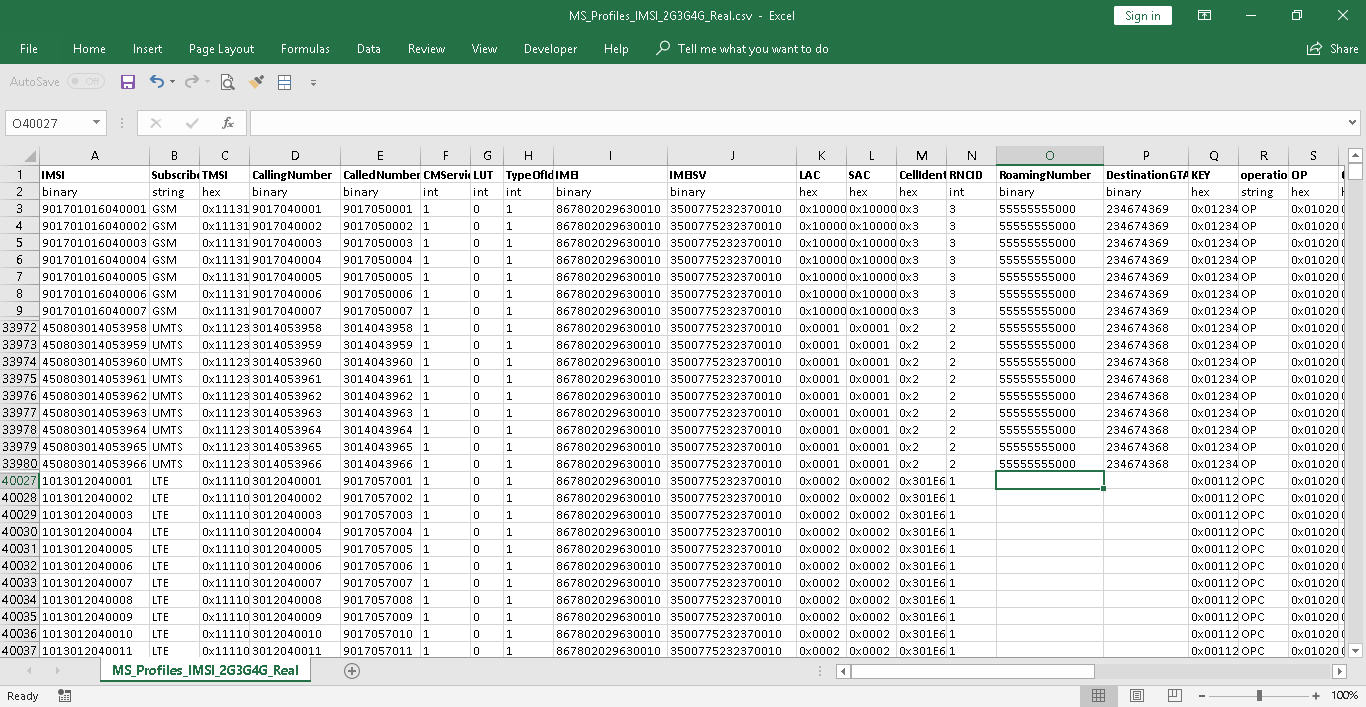End-to-End Wireless Network Simulation Test Suite
12th, Apr 2019
Welcome to another April 2019 issue of GL Communications' Newsletter providing information and insight into our enhanced End-to-End Wireless Network Simulation Test Suite (4G LTE + IMS, 3G, 2G). The Test Suite is enhanced to support variety of procedures for testing inter-operability between the networks simulating Voice, and SMS (Circuit Switched (CS) traffic) and WEB HTTP browsing (Packet Switched (PS) traffic) with roaming/non-roaming users in the network. The test suite supports massive number of subscriber profiles (up to 64,000 Voice/SMS) using a single CSV database system shared across the 4G, 3G, and 2G networks.
Overview
GL's Wireless Network Simulation Test Suite (4G LTE + IMS, 3G, 2G) along with radio access elements is used to provide an advanced full-fledged “Live Network” at your company premises in any customized package to suit test requirements. The test suite provides reliable integrated solutions to vendors and service providers for simulation, monitoring, troubleshooting any wireless network, including, 4G, 3G, 2G and upcoming 5G. The test suite is an invaluable tool for protocol characterization and testing, performance measurement, training, and education.
One can setup a complete virtual real-time network simulating all the network elements, or any of the network elements in the architecture can be replaced with user's DUT to perform single interface, multi-interface, or wrap-around testing. Complex scenarios such as roaming, handovers, inter-network calls can be achieved easily. The Remote MAPS™ Controller application communicates with multiple MAPS™ Servers over TCP/IP and allows for multi-node multi-interface simulation from a single client GUI.

Enhancements
A recent enhancement to MAPS™ Wireless Network Simulation Test Suite (4G LTE + IMS, 3G, 2G) includes ability to simulate -
- Inter-network calls - Inter-operability between 4G with IMS, 3G, 2G networks
- Roaming procedures across 3G and 4G networks
- 4G user calling 3G user via Circuit Switched Fall-Back (CSFB)
- Inter and Intra Network Handovers Procedures
- Location Services
- Offline and Online Charging Procedures
- High Density traffic simulation
- Higher volume Voice and SMS calls (thousands of simultaneous calls/platform) with MAPS™ RTP HD appliance
- Easily achieve massive simulation of UEs (up to 500000) with high density (up to 4 Gbps or 40 Gbps) mobile traffic (stateful HTTP/PCAP) generation per MAPS™ PacketLoad appliance
- CSV database system for massive number of subscriber profiles
The various test scenarios that can be simulated using GL’s Wireless Network Simulation Test Suite are discussed further below:
Roaming Scenarios
Roaming UEs ensures that a traveling wireless device (typically a cell phone) is connected with the network continuously without losing the connection. The following scenarios depicts Voice/SMS calls between roaming users on different networks (4G LTE/IMS, 3G, 2G) all of which are simulated by End-to-End Wireless Network Simulation Test Suite.
- 2G user calling 3G roaming user
View Use Case (Network Illustration and Procedure Simulation)
- 2G user calling 4G roaming user
View Use Case (Network Illustration and Procedure Simulation)
- 3G user calling 2G roaming user
View Use Case (Network Illustration and Procedure Simulation)
- 3G user calling 4G roaming user
View Use Case (Network Illustration and Procedure Simulation)
- 4G user calling 3G roaming user
- 4G user calling 2G roaming user
Inter-network Calls between Non-roaming Users
The following scenarios depict inter-network Voice/SMS calls between non-roaming users on different networks (4G LTE/IMS, 3G, 2G).- 2G user calling 3G user
View Use Case (Network Illustration and Procedure Simulation)
- 2G user calling 4G user
View Use Case (Network Illustration and Procedure Simulation)
- 3G user calling 2G user
View Use Case (Network Illustration and Procedure Simulation)
- 3G user calling 4G user
View Use Case (Network Illustration and Procedure Simulation)
- 4G user calling 2G user
View Use Case (Network Illustration and Procedure Simulation)
- 4G user calling 3G user
View Use Case (Network Illustration and Procedure Simulation)
- 2G user sending SMS to 3G user
View Use Case (Network Illustration and Procedure Simulation)
- 3G user sending SMS to 2G user
View Use Case (Network Illustration and Procedure Simulation)
- 4G user calling 3G user via CSFB
View Use Case (Network Illustration and Procedure Simulation)
Inter and Intra Handovers
In cellular networks, the handover procedures are initiated when the user travels across different cell coverage areas which results in transferring the ongoing call or data session from one channel to another within same or different networks. The handover procedure is classified into inter-network and intra-networks handovers.
Both intra and inter Handover procedures can be simulated using GL’s Wireless Network Simulation Test Suite.
- Intra and Inter Handover procedures in GSM
View Use Case (Network Illustration and Procedure Simulation)
- Intra and Inter Handover procedures in UMTS
View Use Case (Network Illustration and Procedure Simulation)
- Intra and Inter Handover procedures in LTE
View Use Case (Network Illustration and Procedure Simulation)
Simulation of Location Based Services (LCS)
The LCS architecture distributes positioning functionality across different network elements. It specifies all the necessary network elements and entities, their functionalities, interfaces, necessary for determining the position of a UE in cellular network. LCS architecture follows a client/server model with the positioning node acting as the server providing information to external LCS clients. Location or distances between two devices is estimated using different methodologies, which basically divides them between network based and handset-based methods.
In the GSM, UMTS, and LTE LCS architecture, GMLC (Gateway Mobile Location Center) is the positioning node and center point of the architecture. In GSM network, Service Mobile Location Center (SMLC) that resides within BSC and Location Measurements Units (LMU) that resides within BS, is used for calculating and updating the location measurements. In LTE network, LCS Application Protocol (LCS-AP) is a logical interface between the MME and the E-SMLC for supporting the location services in E-UTRAN.
The following Location Service procedures can be simulated using GL’s Wireless Network Simulation Test Suite:
- Location Based Services procedures in GSM
View Use Case (Network Illustration and Procedure Simulation)
- Location Based Services procedures in UMTS
View Use Case (Network Illustration and Procedure Simulation)
- Location Based Services procedures in LTE
View Use Case (Network Illustration and Procedure Simulation)
High Density Mobile Traffic Simulation - (Up to 40 Gbps)

MAPS™ Server with PacketLoad 10G Appliance
The Wireless Network Simulation Test Suite includes MAPS™ PacketLoad server appliance for massive UE simulation of up to 500,000 with high density mobile data traffic simulation (up to 4 Gbps or 40 Gbps) for both 3G and 4G LTE networks.
The configuration parameters for UEs in the 2G/3G/4G setup are stored in a single CSV file. Entries include both simulated UEs and real UEs containing parameters such as IMSI, MSISDN, authentication parameters, call type, called number (for simulated UEs), traffic type, etc per 3G/4G network.
The CSV file is divided into three sections: GSM, UMTS, and LTE identified by Subscriber Type variable. And “n” number of UE configurations can be saved within a single file shared across 4G/3G/2G networks while simulating various scenarios.
Any of these UEs can be configured for inter-networking calls, roaming calls, VoLTE, data sessions, and bulk GTP traffic generation.

Performance features of MAPS™ PacketLoad are highlighted below:
- HD GTP Mobile Traffic Core - Stateful high density packet traffic generation
- GTP Mobile Traffic Core (low density) - Stateless simulation of HDL Files, Hex string, and BER patterns
- Mobile Traffic Core - Gateway
- Mobile Traffic Simulation - GPRS Gb
- Simultaneous simulation of multiple GTP sessions per user
- TCP/HTTP, UDP, and PCAP Replay
High Density Voice/SMS Traffic Simulation
The complete Wireless Network Simulation Test Suite supports MAPS™ HD RTP server appliance for high volume of Voice/SMS call simulation over Circuit Switched for load and performance testing 4G/3G/2G networks.
The RTP HD Server is a specialized network appliance available with one or more high-density NIC ports designed to easily achieve massive number of endpoints (100K-200K) per appliance with thousands of simultaneous voice/sms calls.

RTP HD Server Appliance
The configuration parameters for UEs in the 2G/3G/4G setup are stored in a single CSV file. Entries include both simulated UEs and real UEs and containing parameters such as IMSI, MSISDN, authentication parameters, call type, called number (for simulated UEs), traffic type, etc per 2G/3G network.
The CSV file is divided into three sections: GSM, UMTS, and LTE identified by Subscriber Type variable. And “n” number of UE configurations can be saved within a single file shared across 4G/3G/2G networks while simulating various scenarios.
Any of these UEs can be configured for inter-networking calls, roaming calls, and bulk Voice and SMS call generation.

Performance features of MAPS™ RTP HD system are highlighted below:
- Load and stress test to verify the stability of wireless network
- Easily achieve massive number of users (100k to 200k) simulation with thousands of simultaneous voice /sms calls
- Even distribution of incoming traffic
Summary
In summary, GL ’s Wireless Network Simulation Test Suite supports both access and core network simulation. The table below lists all the nodes and interfaces supported for each network type:
| Network Type | Nodes | Interfaces |
|---|---|---|
| 5GC | gNB, AMF, SMF, NSSF, UDM, AUSF, UPF, PCF | 5G Core Network Interfaces - N1N2, N5, N6, N7, N8, N9, N10, N11, N12, N13, N15, N22 |
| 4G LTE | eNodeB, MME, SGW, PGW, HSS, EIR, PCRF, AS, OCS & OFCS | LTE Interfaces - S1, X2, eGTP, S3, S4, S5/S8, S10, S11, S16, SGs User-plane traffic (GTPv2-U) User-plane Gateway traffic Diameter Interfaces - Cx/Dx, Gx, Rx, Gy/Ro, Gm, Sh, SGi, S6a, S6d, S13 and S13' Location Services - SLs, SLg, SLh |
| IMS | CSCFs, HSS, MGCF, MGW, AS, OCS, OFCS, & IP SMS Gateway | IMS Interfaces - Mw, Mi, Mj, Mg, ISC |
| 3G | NodeB, HNB, HNBGW, RNC, MSC, SGSN, GGSN | 3G Interfaces Circuit Switched - IuCS, IuH, Packet-switched - Gc, Gr, Gf, Gd, IuPS, Gn Gp, Gi MAP Interfaces - B, C, D, E, F, H Inter-network Interfaces - BICC, CAP, INAP Location Services - Lg, Lh |
| 2G | BTS, BSC, MSC, HLR, EIR, VLR, SMSC, GMSC, gsmSCF, gsmSSF | 2G Interfaces Circuit Switched - A-bis, A, Packet-switched - Gb, Gn Gp, Gi MAP Interfaces - C, D, E, F, H Inter-network Interfaces - BICC, CAP, INAP Location Services - Lg, Lh |
| TDM | PSTN | CO, Subscriber, Switch, STP, SSP, SCP | ISDN, ISUP, CAS [* requires additional PSTN Network setup] |
 Back to Newsletter Index Page
Back to Newsletter Index Page